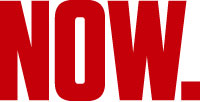The "south" in Syria's insurgency matrix, consists of Rif Dimashq (the areas surrounding the capital and the capital itself) and Deraa. There are half a dozen or so really strong brigades operating here, most of them part of the Free Syrian Army or linked to the Supreme Military Command. Jordan's General Intelligence Directorate plays an increasingly vital role in directing aid and weapons to select rebel brigades and battalions. This front, in stark contrast with northern Syria, has seen moderate, Western- and Arab-backed rebel formations performing exceptionally well not only against the regime but also in competition with Salafist-jihadist elements, including Jabhat al-Nusra and the Islamic State of Iraq and the Levant, the two wings of al-Qaeda's Syria franchise. The real problem facing the southern front is that Jordan, which is a relative newcomer to the anti-Assad cause, has its own ideas of which rebels to support, and these often conflict with the preferred clients of the United States and Saudi Arabia. Nevertheless, recent progress not only underscores the ability of external actors to influence the Syrian war even at this late stage, but it also points the way for how state actors might still try to salvage the rebellion in the radicalized northern and eastern fronts.
A big rebel offensive began in Rif Dimashq in late July in spite of the regime's constant, heavy bombardment of rebel-infiltrated suburbs. Here, FSA-aligned units have been harder to dispel than elsewhere in Syria, even with tanks, gunships, artillery shells, and chemical weapons. Rebels spent the summer carving inroads into Jobar, a strategically significant district from which they've pushed further and further toward central Damascus, seizing or besieging along the way major regime installations such as the Abbassiyeen garages, an electrical facility, a tank park, and a military school. Jobar belongs to the opposition. The neighborhoods of Qaboun, Barzeh, Salhiya, and Bab Touma are all contested, as are Damascus International Airport and Mezze military airports, major transport hubs for Iranian and Russian resupplies into Syria.
As Elizabeth O'Bagy, a senior analyst at the Institute for the Study of War, has shown, Liwa al-Islam, one of the biggest and best-equipped brigades in Damascus, has used confiscated anti-aircraft missiles to shoot down at least one Syrian Air Force helicopter and possibly other aircraft. Not only was this group responsible for the spectacular assassination of Assad's crisis management cell last July, but it's now issued a warning to the regime that any aircraft flying over East Ghouta will be shot down. Not quite a no-fly zone, but close. Air traffic over Damascus has diminished, according to local activists.
Also of note is the announced formation of Jabhat Fatah al-‘Asima, or the "Front to Open the Capital," which consists of 23 rebel factions, the two most important of which are the Farouq al-Sham Battalion and the "Sufi-leaning" Habib Moustafa Brigade. Like Liwa al-Islam, both are members of the Islamic Front for the Liberation of Syria, a more mainstream Islamist consortium of rebel formations that itself aligns with the Supreme Military Command.
So much for Rif Dimashq.
In Deraa, conditions are equally propitious for FSA-aligned forces. As best I can piece together from various sources, east of the M5 highway that connects Damascus to Jordan, the Free Syrian Army control around almost all the terrain, which is geographically impressive but strategically unimportant. West of the M5, the regime still lords over perhaps 60-70 percent of Deraa, but it is here where the FSA appears to be squeezing Assad's men tighter and tighter each week.
Consignments of Saudi-bought Croatian anti-tank and anti-infantry weapons, which were run into southern Syria beginning in January 2013, have helped, as I reported here several months ago. While some of these munitions did indeed wind up in the hands of Jabhat al-Nusra fighters, the majority nevertheless remained in the possession of those for whom it was intended. These include the Fajr al-Islam Brigade, the Omari Brigade and the Yarmouk Brigade.
Bashar al-Zoubi, also known as Abu Fadi, is a wealthy businessman who made his fortune in the tourism industry and hails from a clan in Syria that numbers as many as 160,000. (The al-Zoubis are, in fact, transnational, with some residing in Syria and others residing in Jordan, which makes them particularly well-placed as interlocutors between Amman and the opposition in Deraa and Damascus. In a sense, they strongly resemble the Jarba clan, which has retained prominence in both Syria and Saudi Arabia, and whose most recognizable member is the current, Saudi-backed head of the Syrian National Coalition, Ahmad Jarba.)
Abu Fadi told me in a Skype interview that he's got 4-5,000 men under his direct command in the al-Horan region. In total, 30-40,000 troops subscribe to the SMC, albeit without anything like a top-down command-and-control structure. The SMC is effectively a political and coordination apparatus.
I asked Abu Fadi why the south was relatively free of al-Qaeda in comparison with the north. "The only reason folks starting fighting with Jabhat al-Nusra," he said, "was the lack of any real support to the FSA, weapons and ammunition being delivered to us." Mostly, the FSA has been successful from Damascus to Deraa because of its integration with local tribes and communities. The bulk of its materiel has been confiscated from the regime. Were any new weapons coming in now? Some, he acknowledged, but still mainly light arms, not anything of the caliber or range to further tilt the balance of power.
This is the standard FSA line given to journalists so as to avoid compromising their Saudi and Jordanian patronage, although the extent to which it is a willful fudging of the facts really depends on who's doing the talking.




